Chaste tree (
Vitex agnus-castus) has many characteristics that make it a popular choice in California and the Southwest, and in southeastern regions of the U.S. that experience hot summers; these include fragrant flowers and foliage, drought tolerance and versatility in its growth habit. Attractive dark green foliage is transformed by the appearance of violet blooms on this large shrub. In mild-winter regions, this large deciduous shrub can also be trained into a small tree.
Caution: Chaste tree can become invasive in areas with humid climates, so take care to use it in managed landscapes where its potential spread can be checked.
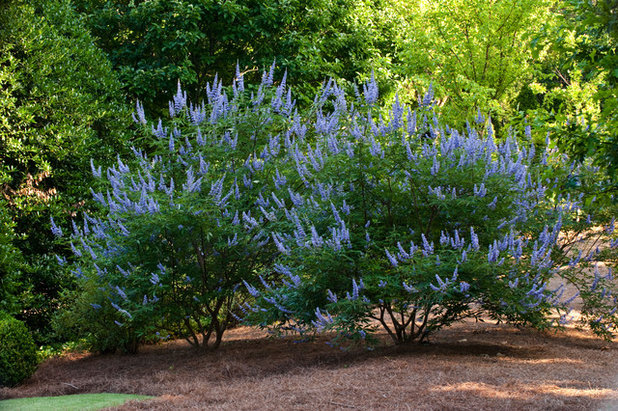
Agricultural Services
Botanical name: Vitex agnus-castusCommon names: Chaste tree, lilac chastetree, monk’s pepper
Origin: Native to the Mediterranean region of southern Europe
Where it will grow: Hardy to minus 10 degrees Fahrenheit, or minus 23.3 degrees Celsius (USDA Zone 6; find your zone)
Water requirement: Low to moderate; water deeply in spring, summer and early fall
Light requirement: Full sun
Mature size: 10 to 20 feet tall and wide
Benefits and tolerances: Drought-tolerant; attracts butterflies; has fragrant flowers and foliage; deer-resistant
Seasonal interest: Flowers can appear from late spring through early fall
When to plant: Spring or fall
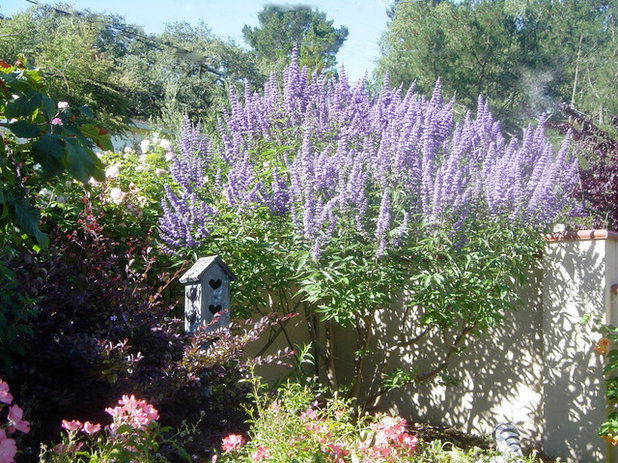
Pamela Bateman Garden Design
Distinguishing traits. The dark green aromatic leaves are palmate, meaning they are made up of individual leaflets. They’re 6 inches long and shaped like the palm of a hand.
Chaste trees are deciduous and can be grown as large shrubs or trained into small multitrunk trees. Some people object to its leafless winter appearance, so it’s best to have other plants nearby that will take center stage during that time.
It can die back to the ground during severe winters in zones 6 and 7 but will grow back quickly in spring. Chaste tree has been grown in Zone 5 gardens, where it is used as a large perennial and dies back in winter, but it is not a reliable survivor of severe cold there.
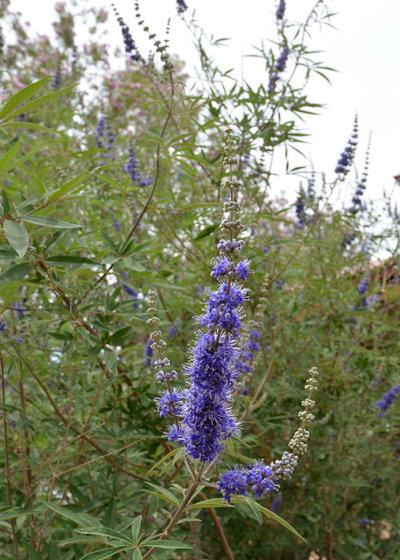
Noelle Johnson Landscape Consulting
Tiny purple flowers appear in warm temperatures. The most intense bloom period occurs during the height of summer, although reblooming can occur in early fall in warmer regions. The fragrant blooms are arranged along 12-inch-long plumes and attract butterflies. The flower color can vary from white to a light violet shade all the way to dark purple.
Warm summer temperatures increase the amount of flowers produced.

Noelle Johnson Landscape Consulting
Here, a chaste tree is getting ready to bloom in an Arizona garden.

Sonoran Gardens Landscape, Design & Construction
How to use it. This Mediterranean native’s drought tolerance, large growing range and ability to be trained into a large shrub or small tree make it a versatile asset in the landscape.
Allow it to grow into a large shrub. It can be used as a colorful backdrop during the warm season with smaller shrubs and perennials planted in front. Create a large, informal hedge to mark property boundaries or to act as a living wall for a courtyard or patio area.

Train chaste tree as a small tree to anchor a bare corner, or surround it in a planting island with other drought-tolerant plants, such as bush morning glory (
Convolvulus cneorum), gaura (
Gaura lindheimeri), tufted evening primrose (
Oenothera caespitosa) and South American mock vervain (
Glandularia pulchella).
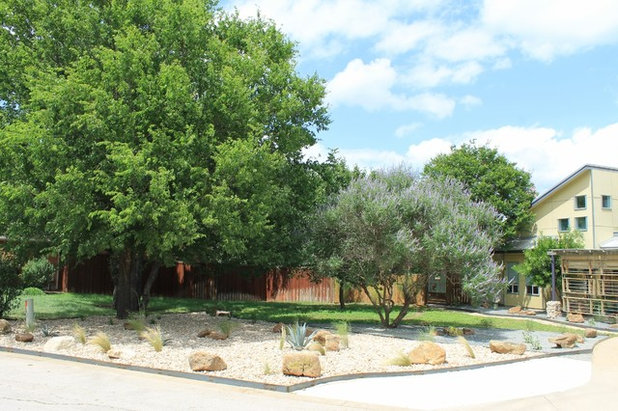
Austin Native Landscaping
Planting notes. Plant in a location that receives full sun, in well-drained soil. Chaste tree flowers best when watered deeply and infrequently. Excess watering will increase the growth rate at the expense of flowering.
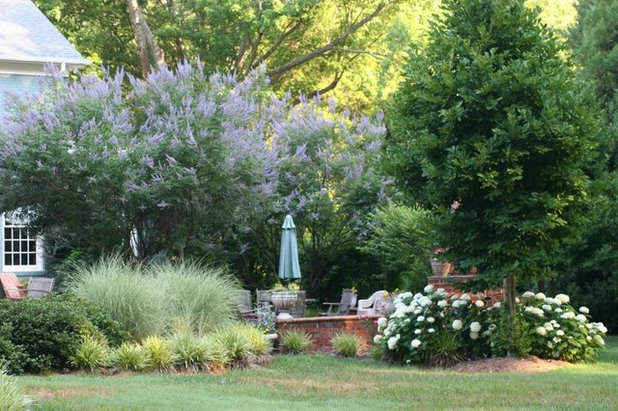
Sylvia Cobb Landscape Designs
This large shrub should be pruned back in late winter or early spring, when it is dormant, to the desired shape. Fertilize in spring, using an all-purpose fertilizer.
There are a number of varieties of
Vitex agnus-castus. Here are several favorites that you may want to try:
- ‘Alba’ and ‘Silver Spire’ have white flowers.
- Delta Blues features a compact growth habit.
- V. a. latifolia is the most cold-tolerant.
- ‘Lecompte’ has long blue flowering plumes.
- ‘Lilac Queen’ features a large growth habit.
- ‘Rosea’ and ‘Salinas Pink’ have large pink flowers.
- ‘Shoal Creek’ has large blue-violet flowers.





